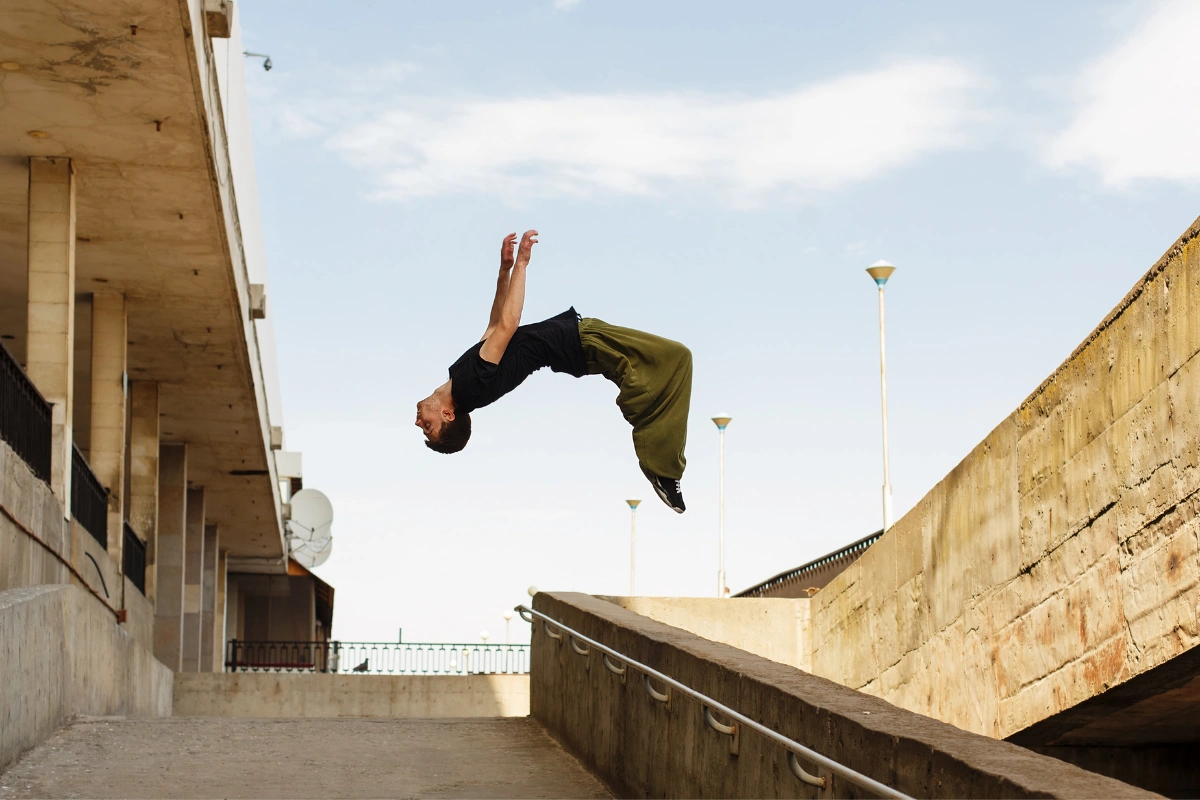Parkour is a physical discipline that involves moving through an environment by running, jumping, climbing, and vaulting over obstacles in an efficient and fluid manner. Originating in France in the late 20th century, parkour emphasizes creativity, agility, and self-expression as practitioners navigate urban landscapes and natural terrains.
Key aspects of parkour include:
- Movement Techniques: Parkour incorporates a variety of movements, such as jumping, rolling, wall-running, and balancing. Practitioners learn to adapt their movements to different surfaces and obstacles, using techniques that prioritize safety and efficiency.
- Flow and Efficiency: The essence of parkour lies in finding the most effective and fluid way to move from point A to point B. This often involves chaining together different movements seamlessly, allowing for a continuous flow through the environment.
- Mindset and Philosophy: Parkour is not just about physical skill; it also emphasizes mental strength, creativity, and problem-solving. Practitioners often develop a mindset of overcoming challenges, both physically and mentally, which can extend to other areas of life.
- Community and Culture: Parkour has fostered a global community where practitioners, known as “traceurs” (for males) or “traceuses” (for females), share their skills, knowledge, and experiences. This community often promotes values such as support, respect, and personal growth.
- Safety and Training: While parkour can be physically demanding, safety is a critical aspect. Practitioners are encouraged to train progressively, building strength and skill over time, and to use proper techniques to minimize the risk of injury.

Read more here: WHAT IS PARKOUR?

Leave a reply